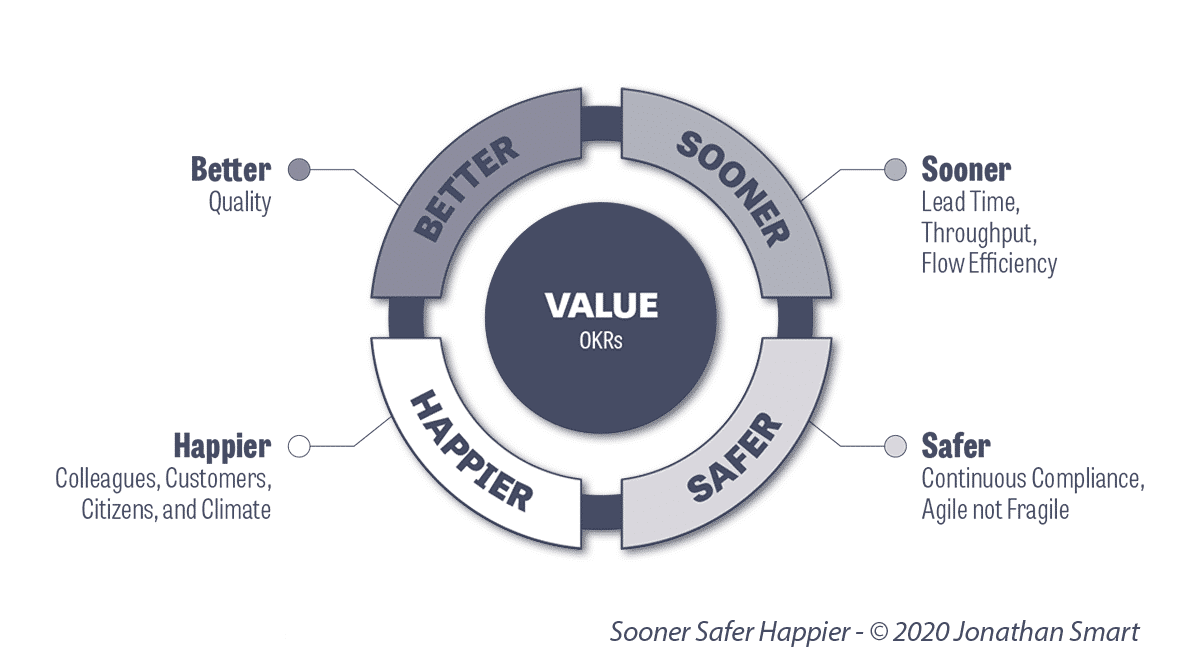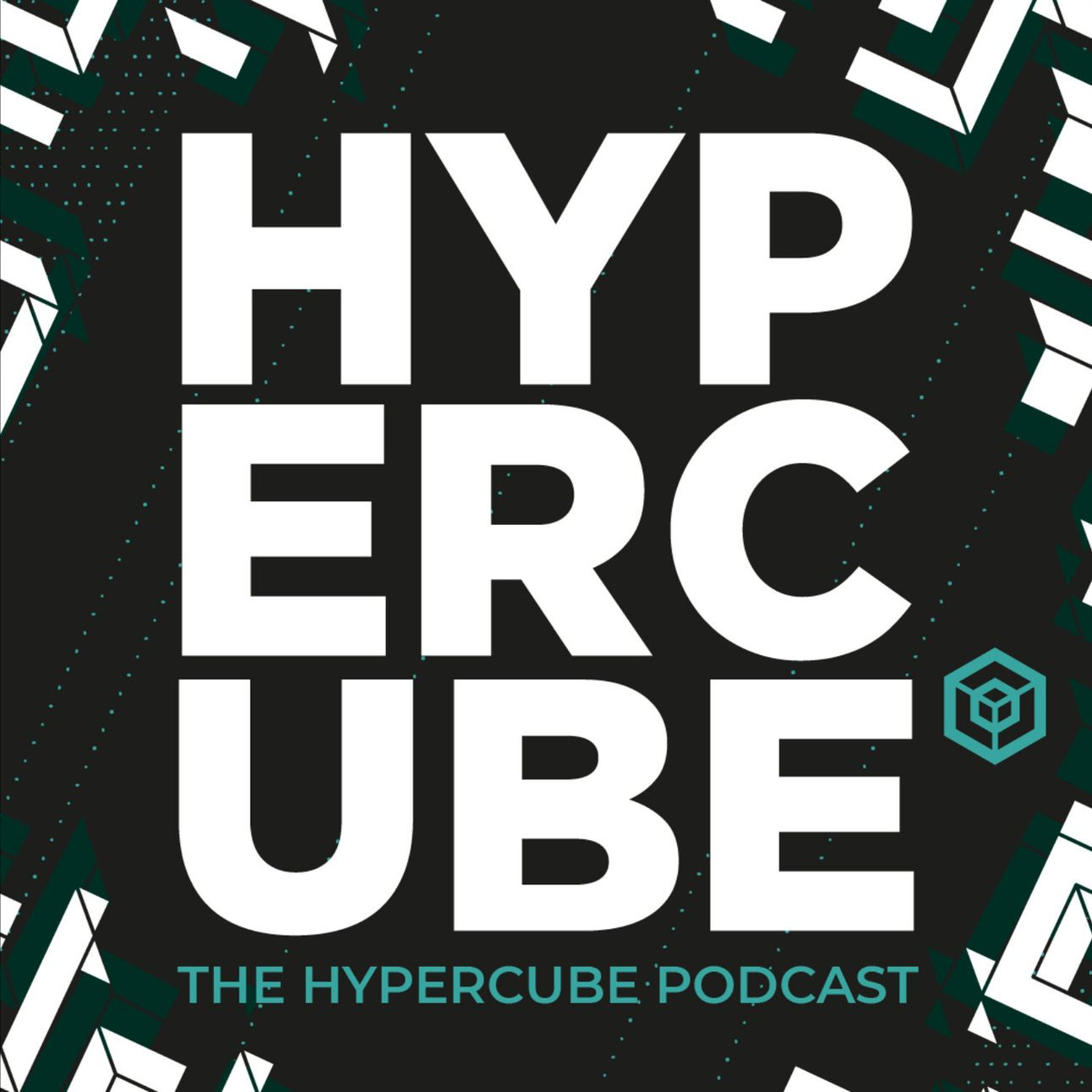BD #38 - "Better Value Sooner Safer Happier" for data leaders
My most recommended book and how it's gold for data and AI teams
My most recommended book
I sent a copy of this book to yet another customer this week and thought it’d be a great topic for a newsletter article. This has to be, by far, the book I’ve recommended or gifted the most.
For those unfamiliar, Jonathan Smart is best known for his time at Barclays, where he led the company’s agile transformation. His experience there informed much of the thinking behind Better Value Sooner Safer Happier. His work at Barclays set the stage for his later career as an advocate for organisational agility and value-driven transformation.
In Better Value Sooner Safer Happier, Jonathan Smart makes a strong case for revolutionising how organisations deliver value.
Now, although this book comes from the context of shifting one of the world’s largest banks into an agile mindset, I think it’s actually an incredible blueprint for getting any organisational change achieved. There are some great tactics in the book about leaning into early adopters and champions that really apply to many situations.
But how exactly can these concepts work in the world of AI and data science?
Here’s an attempt to capture how I use a few of the core ideas from Smart’s framework to explore how they can help data and AI teams deliver better outcomes - and improve organisational culture towards our domain.
Focus on Outcomes, Not Outputs
One of the most powerful lessons is the shift from outputs to outcomes.
When we talk about delivering value in AI, it’s easy to get caught up in fancy algorithms or the latest tech - we’re right in the middle of a huge hype-wave that’s getting people excited to move without considering the full picture.
But here’s the thing: all the tech in the world doesn’t matter if it doesn’t drive business value. Smart argues that small, iterative wins create momentum. For AI teams, this means delivering measurable results in manageable chunks.
Think of it this way - instead of aiming for a massive, fully-automated solution, start with a smaller initiative like automating customer segmentation. What’s the smallest possible thing you can build to prove success and learn more?
Achieving quick wins will build trust and ensure you're actually meeting the business’s needs. Every small success makes the next initiative smoother and faster to implement.
Invite Over Inflict: Empowering Your Data and AI Team
Smart's concept of “Invite over Inflict” is gold for leadership in data teams.
If you want your data and AI team to innovate, don’t just mandate new technologies or frameworks to the end users and stakeholders- bring them into the process. Data and AI teams thrive when they’re engaged directly with the stakeholders. The best work happens then, when both teams are empowered to experiment, learn, and contribute to decisions, rather than being told what to do and how to do it.
This is especially true for AI and advanced analytics, where experimentation is key and quick feedback reigns supreme.
One way to “invite” these teams into the conversation is by running small pilot projects. The smaller, the better. Maybe you’re implementing a new model for an important forecast. Before rolling it out across the entire organisation, test it with a smaller team first. Integrate it with their existing workflow and let them play with the tools and provide feedback in a real business setting. This process makes both teams more invested, leads to better adoption, and more successful outcomes.
Build the Right Thing: Align AI with Business Needs
In our domain, it’s easy to fall in love with tech for tech’s sake. But Smart makes it clear: always focus on building the right thing. For data and AI teams, this means every initiative needs to start with a clear business problem.
Don’t build models just because they’re cool—build models that solve specific, measurable problems.
If you can get a direct, verifiable, ROI metric against which to benchmark you’re in a really strong position. If you can’t, keep trying.
Take a classic AI use case that gets leadership all excited - demand forecasting. It’s tempting to build an AI model to predict sales across all products, regions, and time periods. But that’s a massive, complex problem.
Instead, focus on the product line or region where forecasting could make the biggest impact. Aligning AI efforts with clear business outcomes ensures you’re building solutions that actually matter, not just tools that are fun to develop.
Continuous Compliance and Ethical AI
One of the standout concepts in Better Value Sooner Safer Happier is continuous compliance. As models and data volumes continue to scale, you must embed compliance and ethics into your processes from day one. This applies to things like bias detection, data privacy, and transparency in AI-driven decisions.
For instance, if you’re deploying a credit scoring model, you need to ensure that it’s explainable and doesn’t introduce hidden biases.
It’s not enough to test for compliance at the end of development.
Build a framework that continuously monitors these issues throughout the lifecycle of the model. Doing this not only ensures regulatory compliance but also builds trust with stakeholders - as they’ll be able to have meaningful conversations about their concerns, in language they understand.
The more you can do to build transparency, the better.
Leadership is Team #1: Breaking Down Silos
One of the most practical takeaways from Smart’s book is the importance of leadership alignment. In tech, siloed teams often lead to miscommunication and a lack of alignment between data initiatives and business goals. Smart emphasises that leadership teams must act as one cohesive unit, with aligned priorities.
As a data leader, your job is to bridge the gap between technical teams and business leadership.
This might mean creating cross-functional teams where data scientists, product managers, and business stakeholders work together from day one. It might be lunch and learns, or demystifying talks given to the wider business.
Think of your team as part of a larger ecosystem—what they build only matters if it fits seamlessly with the broader business strategy.
You’re Never Done Improving: The Data and AI Journey
Finally, all of this is a moving target. Models degrade, data changes, technology shifts, and what worked last year might not work tomorrow. Smart’s principle of “You’re never done improving” is essential for data and AI teams. You need a mindset that embraces continuous learning and improvement.
Instead of treating an AI model or dashboard as a “one-and-done” project, build a feedback loop that regularly revisits the usefulness with the stakeholder, gather metrics on usage where possible, retrain/refine/rebuild where needed.
With the pace of change in technology it’s easy for a tool to be usurped by something more powerful every 3-6 months. Don’t chase the hype, but don’t let things stagnate or fall behind either.
As techies, it’s easy to miss when an internal change can completely change the usefulness of a tool you’ve built - someone gets promoted or leaves, a team gets moved to a new initiative, resulting in the main champion or user moving away from what was built.
The same goes for external shifts - if you’ve deployed a recommendation engine, for instance, monitor its performance over time, and adjust it as customer behaviour changes. Smart’s advice here is spot-on: incremental improvement isn’t just a best practice - it’s survival.
Final Thoughts
There’s a load of value in this book - the principles of Better Value Sooner Safer Happier offer apply to a broad range of scenarios and Smart’s writing online is really good too.
I hope the post here resonates with you, but it’s well worth grabbing a copy (the audiobook is good too). Here’s a link if you need.
If you’ve got a favourite book, let me know as I’m always eager to apply the best wisdom I can find to my work.
All the best,
Adam
If you enjoyed this, consider sharing this newsletter with others that would find value from it or follow what we’re doing at Hypercube
More from Hypercube
We’ve been super busy at Hypercube building the best data and AI services organisation for the energy sector.
Newsletter
The Hypercube newsletter is launching soon and will share insights aligned to data and AI in the energy sector, with more technical content than you’re used to reading here. Sign up here!
Podcast
If podcasts are more your thing - we interview data and AI leaders from the energy sector on what they’re doing and where they think the technology is supporting change.
Find it wherever you get your podcasts, any feedback, reviews, and shares are greatly appreciated and really help spread our message.
Apple Podcasts - The Hypercube Podcast
Spotify - The Hypercube Podcast
When you're ready, there are a few ways I can help you or your organisation:
Sponsor this newsletter: find my latest sponsorship details, stats, and packages here: passionfroot.me/aesroka.
Consultancy: for help with your data and analytics initiatives, get in touch via email to adam.sroka@wearehypercube.com
Free, daily insights: on LinkedIn here, Threads here, or Twitter here






